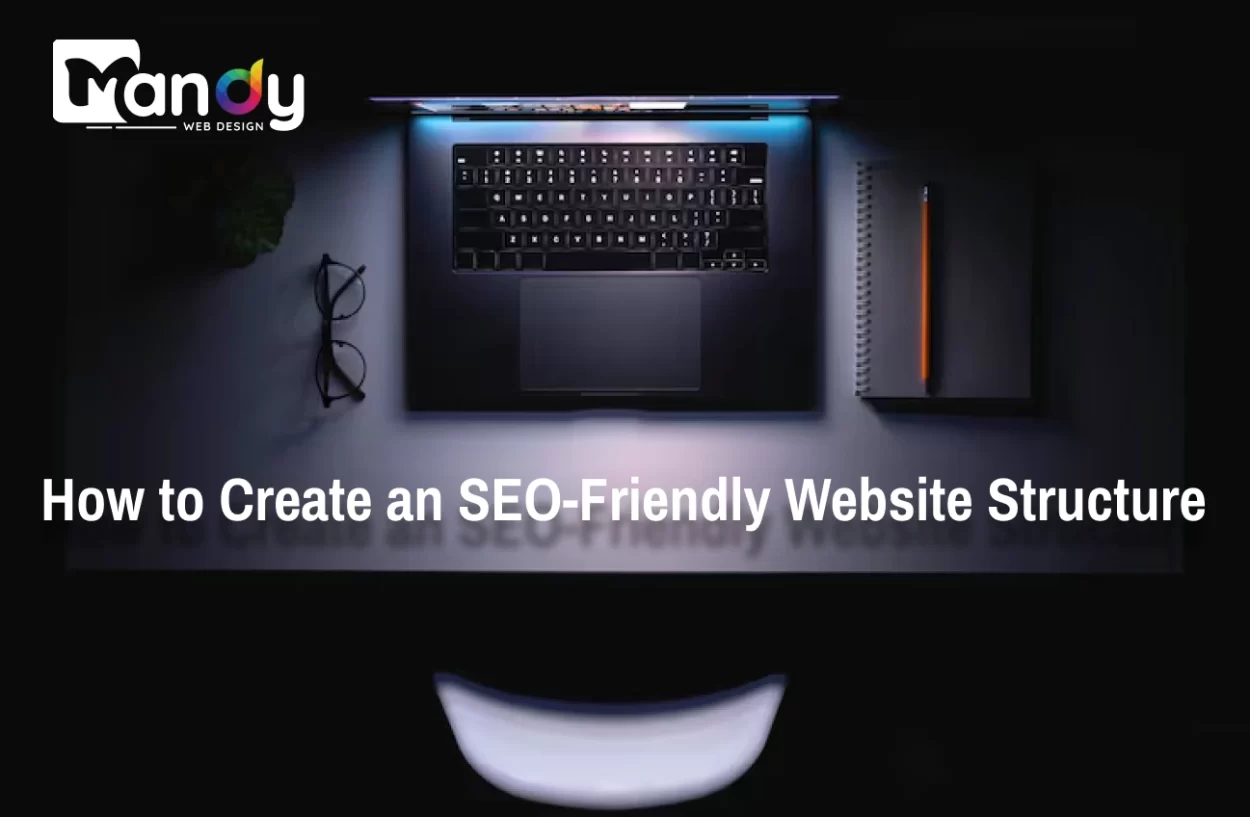A website is more than just pages and content—it’s a space where visitors come to find information, products, or services. But if your website is confusing or hard to navigate, people may leave quickly, and search engines may struggle to understand it. This can affect your rankings and overall success online.
A well-organized website acts like a map. Visitors can find what they are looking for easily, and search engines can understand which pages are most important. The way your website is structured also affects how fast pages load, how links are shared between pages, and how search engines decide which content to show in search results.
In this guide, we’ll show you how to create an SEO-friendly website structure. You’ll learn how to plan your site layout, organize your pages, use internal links effectively, and improve navigation. Following these steps will help your website rank better on search engines, make it easier for visitors to explore, and provide a smooth browsing experience.
What Is a Website Structure?
Website structure can simply be described as the design of your website’s pages and the relationship they have with one another. It impacts on the user experience, aesthetics, navigation, and SEO. A proper structure will make your site simple to navigate and it will enable search engines to index your content effectively.
It is like a map: the home page is the center of the map, then it has main sections such as About, Services, Blog and Contact. At this point, you can have sub pages, product pages or special sections based on your business.
The good structure of the site guarantees that the visitor can quickly locate a piece of information and have a smooth surfing experience. It also has a direct effect on your ranking in the search engine since Google takes into consideration usability as well as accessibility when ranking websites.
Types of Website Structure
Website structures can generally be categorized into two main visual styles:
- Flat structure: There are not many pages that are directly linked to the homepage. It takes only a few clicks to get to any of the pages.
- Deep structure: There are main categories on the homepage that are further divided into several subpages. The visitors might require a number of clicks to be directed to the deeper pages.
Here are the four most common types of website structures used today:
1. Hierarchical (Tree Model)
The hierarchical structure is the most common. Pages are arranged in a tree-like format:
- Homepage
- Top-level pages (main categories)
- Subpages or child pages
This structure is ideal for websites with lots of content, as it keeps everything organized. Dropdown menus often make navigation simple.
Best Use: Large organizations, blogs with multiple categories, or any site with substantial information.
Tips for Using Hierarchical Structure:
- Ensure users can easily jump from one page to another.
- Avoid unnecessary barriers in navigation.
- Interlink related pages logically to boost SEO.
2. Linear (Sequential Model)
A linear structure is straightforward, with pages arranged in a sequence.
Best Use: Small websites with few pages.
Advantages: Low maintenance, simple navigation.
Tips for Linear Structure:
- Ideal for small businesses or landing-page websites.
- Keep the sequence logical so users can follow a clear path.
- Perfect if search engines are having trouble indexing your site.
3. Webbed (Network Model)
Webbed structures resemble a network. Pages are interconnected rather than following a strict hierarchy.
Best Use: E-commerce websites, directories, or sites where users may jump between pages freely.
Tips for Webbed Structure:
- Connect subcategories, suggested products, and related pages.
- Make sure users can reach content with minimal clicks.
- Use this structure to maximize internal linking for SEO.
4. Database Structure
A database-driven structure uses algorithms to dynamically display content based on user interaction.
Best Use: Banks, universities, or platforms with personalized content.
Tips for Database Structure:
- Ensure content is accessible for search engine crawlers.
- Use this structure when users need customized experiences.
- Keep security and data privacy in mind.
How to Choose the Right Website Structure
Selecting the right structure depends on your business type, size, and SEO goals:
- Large organizations with complex content → Hierarchical structure
- Small websites → Linear structure
- E-commerce platforms → Webbed structure
- Personalized platforms → Database structure
Consulting an SEO expert can help align your structure with SEO goals and ensure a smooth user experience.
Why SEO-Friendly Website Structure Matters
A well-organized website impacts SEO in multiple ways:
Benefits for Users
- Easy Navigation: Visitors can quickly find the information they need.
- Quick Access to Pages: Clear categories reduce frustration and page abandonment.
- Better User Experience: Engaged visitors stay longer and return more often.
Benefits for Search Engines
- Crawling Made Simple: Google can easily discover and index your pages.
- Sitelinks: Structured sites help Google highlight important pages in search results.
- Content Planning: Organizing pages around topics improves content marketing strategy.
- Scalability: Adding new pages or categories becomes easier.
- Highlighting Important Content: Main content can be showcased prominently for better visibility.
- Faster Crawling of New Pages: Search engines find and index new content quickly.
- Passing Link Authority: Backlinks can be distributed effectively across pages.
- Avoid Keyword Cannibalization: Proper structure prevents multiple pages from competing for the same keyword.
Characteristics of an SEO-Friendly Website
When building or redesigning your site, ensure it has these features:
1. Responsive Design
Responsive websites are essential since more than half of the users search through mobile. A mobile-compatible layout enhances positions and maintains the interest of the visitors.
2. Text-Based Content
Text is best understood by search engines. Put at least 150 words per page, and have meta descriptions and correct title tags to improve SEO.
3. Optimized Images
Reduce the load time by compressing images. To enhance accessibility and SEO, add alt text.
4. Clear Navigation
Use anchor text and text menus. Develop plan categories and subcategories prior to final design.
5. Redirects
During redesign, redirect old pages to new URLs so that the old pages do not lose SEO value and cause 404 errors. Such tools as the Redirection plugin in WordPress can assist.
Steps to Create an SEO-Friendly Website Structure
Step 1: Competitor Research
Research competitor websites to see what they’ve done structurally. Determine what’s effective, what’s not and how you can do better.
Step 2: Collect Keywords
Use Google Keyword Planner, or Google Trends to get keywords. Cluster similar keywords into groups for pages and categories.
Step 3: Categorize Pages
Organize pages into logical groups. Use mind mapping tools like Mindmeister to visualize your site hierarchy.
Tips:
- Keep pages reachable within three clicks.
- Avoid creating hierarchy solely based on search volume.
- Identify technical pages (e.g., privacy policy) and use noindex/nofollow if needed.
- Make the site scalable for future additions.
Step 4: Maintain Clear URLs
Create simple, descriptive URLs:
- Use readable words and avoid underscores.
- Include relevant keywords.
- Use hreflang for multilingual sites.
Step 5: Internal Linking
Use internal links to connect pages and navigate users as well as allow crawlers to index the content.
Step 6: Streamline navigation
All significant pages and subcategories should be presented in menus. Make sure menus are user friendly and mobile.
Common Mistakes to Avoid
- Unclear category names
- Poor classification of subcategories
- Duplicate pages
- Outdated content
How Mandy Web Design Can Help You Build an SEO-Friendly Website
Creating an SEO-friendly website structure may seem overwhelming, especially with the multiple layers of planning, categorization, and optimization required. This is where a professional web design agency can make all the difference. Mandy Web Design specializes in creating custom websites that are not only visually stunning but also structured to perform exceptionally well in search engines.
With over 15 years of experience, Mandy Web Design focuses on combining user experience, SEO best practices, and modern design to help businesses achieve their online goals. Our team ensures that your website:
- Has a clear, logical structure for easy navigation
- Uses SEO-optimized URLs, meta tags, and internal linking
- Is mobile-friendly and responsive across all devices
- Loads fast and provides a smooth browsing experience
Whether you’re a small business looking for a simple linear website or a large e-commerce platform needing a webbed or hierarchical structure, Mandy Web Design can craft a solution tailored to your needs. By aligning your website structure with SEO and user experience, We help drive more traffic, higher engagement, and better conversions.
FAQs About How to Create an SEO-Friendly Website Structure
A website structure refers to how the pages of your site are organized and linked to one another. A clear and well-planned structure improves user experience by making navigation simple and intuitive. It also helps search engines index your pages efficiently, which can directly impact your rankings and online visibility.
There are four common types of website structures: hierarchical, linear, webbed, and database-driven. Each type serves different purposes depending on the size of your website, the amount of content, and the user experience you want to provide. Choosing the right structure ensures both users and search engines can navigate your site effectively.
The choice depends on your website’s size, content, and user needs. Large websites with multiple categories usually benefit from a hierarchical structure, while small websites work well with a linear approach. E-commerce platforms often use a webbed structure for easy navigation, and platforms with personalized content may require a database-driven structure. Consulting with an SEO expert can help you select the most suitable option.
An SEO-friendly structure focuses on easy navigation, clear and descriptive URLs, and internal linking between pages to help search engines crawl your site. It should be mobile-responsive, load quickly, have optimized images and text, and be scalable to accommodate future content or page additions.
Yes. If your website is confusing, lacks proper navigation, or does not use internal linking effectively, search engines may struggle to index your pages. This can result in lower visibility in search results and reduced traffic, even if your content is high quality.
Absolutely. Existing websites can be optimized by improving navigation, organizing pages logically, creating clear URLs, and adding internal links. Proper redirects should be implemented to retain SEO value while updating the structure, ensuring both users and search engines benefit from the changes.
A well-organized website allows visitors to find information quickly and easily. Clear categories, intuitive navigation, and accessible content keep users engaged longer, reduce bounce rates, and encourage repeat visits. In contrast, a poorly structured site can frustrate users and lead to lost opportunities.
Mandy Web Design specializes in creating custom websites that combine a visually appealing layout with SEO-friendly structures. We ensure your website has logical navigation, optimized URLs, mobile responsiveness, fast loading times, and proper internal linking. Our goal is to help your business attract more traffic, engage visitors, and achieve higher conversions.

About the Writer
Mandeep Singh Chahal
Founder/CEO, Mandy Web Design
Mandeep Singh Chahal is the proud Founder/CEO of Mandy Web Design. After completing his graduation from Punjab University, Mr. Mandeep started gaining experience in SEO, Digital Marketing, Web Designing, and Business Development. His years of experience have earned him a reputed Web Design Company – Mandy Web Design.


